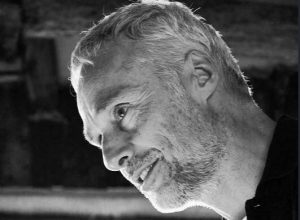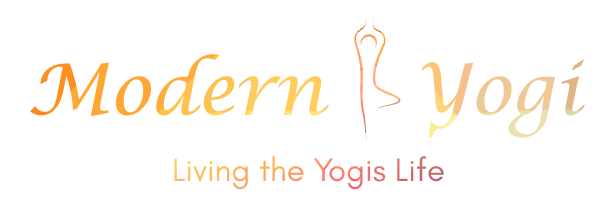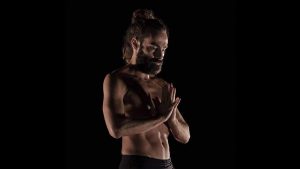I met with Antoni at a cafe in Kifisia. He responded to my invitation immediately with pleasure and arranged a date for the next day. His energy was calm, grounded and with a great sense of humor. He is a well-known actor and a yoga teacher and serves them both consciously and with love. Do something because you love it he said and I truly understood what he meant..
Marianna: What is your relationship with yoga and with theatre?
Antoni: Everything is techniques for me, whatever I say is of course only my opinion and I don’t say it as a teacher or someone who knows everything, I mostly lead to things out of curiosity and I see yoga with the same attitude.
Iyengar used to say that the most difficult asana is to place the mat on the floor and for me every morning it is the same thing “oh my god not again, you did it yesterday..” and then I place it on the floor and I start, again with the same attitude, that is I will start my practice and I will maybe sit down, or lay down, or stand, without knowing what is going to happen, whatever happens, it will be a product of a question, that is oh my right hip hurts, why it hurts, is it a soreness? What did I do yesterday? How did I sleep? What is this and what is that? And by paying attention to the pain and the soreness somehow it starts and leads the rest of the body slowly to move and to go from one asana to another.
And at the theater for me it was the same thing, I never had the desire to be on a stage, or in front of a camera, I guess I had some resistance towards that, but what i really liked was booked. Because there are people that their brain is much sharper than mine, they are more observative, more intuitive and their perspective, the way they write leads you to see another point of view in life, another point of view in things. But to realize this you should spend some time, like on your mat, in an asana you have to stay there, we say that yoga has a therapeutical value and people that do yoga understand that because they feel it.
Another person comes to class and expects to practice yoga one time and all his pains to heal, this is a hard thing, you have lived in a specific way, let’s say you have a job that you are sitting for 8 or maybe 10 or 12 hours and you have pains, at your neck, at your back or even headaches, you can’t expect that because you are going to do something for an hour, once a week you will heal, it requires practice, a struggle, to come back to this and come again, without the obsession of course.
The same way a theatrical script of a famous writer, if you read it fast like you read a newspaper, you won’t manage to understand why the hell we are dealing with this thing 3000 years, but if you have to say aloud the words from the script the fear of explosion will make you read it more carefully, and then the director enters, he is something like your yoga teacher, he will stir you up a bit, he will pamper you, he will push you, and another time he may be strict in order to lead you somewhere, to understand more, why this word and not another one, like in yoga why this asana now and not another one, there are a lot. At this time and at this effort, you need someone beside you, because it is nice to be on your own but you also need company, an inspiration. This path is that helps you to realize why this script is amazing, this path helped me to realize why yoga is yoga.
M: Would you like to tell me how you started practicing yoga?
A: I started with something that is good and bad. The bad is that today if you have a question you google it, this is bad because someone says “Yoga? Oh I think I heard my cousin doing yoga, let me see” and he googles and he will see many things, so many that he ‘ll think that he knows something without even touching it and without it touching him. So the good thing for me was that when I started there was no google, and I had no idea of what yoga is, there wasn’t this choice, there were no photographs when we say I had no idea, I knew absolutely nothing.
M: So you are practicing yoga for many years?
A: Yes many, but some it might be not that many, I am practicing since 1998. I will mention Iyengar again, he said that the first 30 years you are a beginner, and the bad thing is that he is right. So I started by luck because it was cold and I saw yoga at 40 degrees and I got into the class for the heat.
M: Oh you did Bikram, Hot yoga?
A: But I didn’t, it was an ashtanga class and so I had my first yoga class, and it was amazing.
M: A lot of people started with ashtanga and then moved on to another system.
A: No, for me it was a coincidence, I stayed because I met someone and we became friends and we were teasing each other. At this time at the class there were mostly dancers, maybe it was the times like this, and my friend and I didn’t have any idea of the subject and we stayed because of the fun we had, we used to say you can’t do it, neither do I, but I can do it 1 second more than you can. And of course, the teacher was amazing! So I left from ashtanga not because of the system but because I moved and I couldn’t find the same teacher.
And at the Iyengar system, the teacher is important, with the teacher I bonded and stayed in the practice. I’ve practiced ashtanga with an excellent English teacher in Alonnisos if it was him I would practice ashtanga. I decided to teach Iyengar because of this teacher I met in India, to someone maybe ashtanga suits better, to someone else maybe Iyengar suits better, or Hatha, everything is yoga! As far as he does something! The same way I consider everything that it is a practice, as far as it does something.
M: Because Iyengar yoga is a very therapeutical system, do you think that you can also take the same benefits from ashtanga? I ask because you have practiced both.
A: It depends on the teacher, you can get injured from both, you can get healed from both, you can get healed by playing backgammon. There is a movie I don’t exactly remember it but, there is a grandfather with his grandson and he says to him, you should water this tree every day, but every day. It is the meaning of prayer, it is the meaning of practice, for example, if a person knits consciously, I’ve seen a guy in India that learned to knit and it was so much fun, he was a huge guy two meters tall and he was holding it at his huge hands.
M: It was his meditation…
A: Yes. It is what a person does consciously, what he does with observation. Not to forget, not to scatter but to understand, to question and move on. I say again that this is my way of life.
M: There is an idea that you will get to a yoga class and all your problems will be solved, that you will suddenly relax…
A: For me, it was the opposite, that is I slowly started although I had done other things with my body, I started to understand differently, for example, what is the joint, how I can create more space, what is the palm, how it connects with the rest arm, what is the shoulder, what is the right position, and how a different position of the shoulders can make me breath better, and how by breathing better my mood may be changing, but of course this takes time because the teacher maybe says these things to you again and again, and you listen again and again and after a year you say “oh that is what he was saying and this maybe comes in a moment you don’t expect it.
This had happened to me a lot of times at theatre and at yoga also. What I want to say is that what a person does consciously and it is his practice, with consistency, not once on March and three times on April and I know what it is. Because it is too early to say I know what it is especially with systems like yoga with 5000 years of history. It needs time to reveal itself, and this is common with theatre as well, you can’t cheat time.
M: Do they help each other, theater yoga and yoga theater?
A: Like all things, yes of course at the theater there maybe things some times that happen what we say metaphysical, in the same way this can happen to yoga. You are in an asana, and you pay a little bit more attention, it becomes a little bit more meditative, and when your attention is on what your hands and your feet do and where is your breath, suddenly it is like something else opens inside you.
It is the same with theater, you say the words but you have said them again and again and one day you tell them in a way… it is like in old comics that a bulb lights over the head of the hero when the idea comes, it is like this, like a lamp lights inside you. The common that these two have is this, again and again, and again. At the theater, they often ask you are not bored every day the same thing. The same thing can someone think about yoga, again every day the same. It is never the same, and you are not able to know what will happen, what will come, it is something that comes through practice.
M: Nowadays yoga is very asana oriented, it is focused on its physical part. What is your opinion about that?
A: Again Iyengar used to say that all of us want to be spiritual but there is no better place to start from sweat. It needs both. For a person to sit down and meditate, he sits down and says now I will meditate, so I will focus my mind to a specific spot, but there are 100000 things on his mind and today we live here, and we have jobs, family, computers, movies, songs, we are taught to react accepting many outcomes, at the old times when people said that they will meditate they were on the mountains, they ‘ve seen someone passing the day before yesterday and one the day after tomorrow, it was much easier for them to say now I will calm my mind because it was calm, for us it isn’t and whatever we say, as much as we want to be cool and amazing and happy it is not easy.
So to reach this state sitting down and stay seated and your breath to be calm and focus slowly to something you need preparation, some breaths, so your body must be able to breathe, pranayama, for this body and the organs to be able to breathe they somehow have to exercise, to exercise, one step back asana. So yes asana but with this goal.
For me if someone tells me I want to be ready for the beach in 3 months and you know Antoni I really want to have nice abs and really strong arms. Great, I get it, go to the gym, lift weights, do abs exercises, I would never say to him do yoga.
If a person tells me my body is tired from my job, or from a sport, or dancing what should I do, yoga if he tells me my mind is tired what should I do, yoga because this is what I know, there are plenty of other things to do. The same thing if he tells me my soul is tired but not with the goal to have a beautiful body, this will come as a side benefit.
If someone tells me I will play basket to have a great body I would say don’t do it, do something for what it is, play basket for the joy of basket, for the joy of team sport, for the joy of sharing with other people or to understand healthy competition.
This is like when we say I will eat oranges because they have vitamin C, don’t eat it, eat it because it is delicious and you will also get the vitamin because it is there. If something is so much targeted if there is no joy if you don’t appreciate it for what it is and you expect to take something from it for me leave it. Find something that you like, to be able to love it and this will nurture you much more than anything else, don’t copy, but aren’t we all by copying move on, but to a certain point, get inspired from another person, and see if you can love it. Don’t do it because it’s in fashion, or because others do it. So by this meaning, your practice may be asana oriented as long as you know why.
M: Do you practice every day?
A: Yes.
M: Did this took time, to be able to establish it?
A: Yes.
M: I would like people to listen about this, you know, how much time did it take…etc
A: I am grateful to the theater for this, I am grateful for two things, when I started I was in New York and life there was terribly intense, crazy, unbelievable, so I started with this friend that we were going together, and this teacher that was amazing. And there was another thing that was really important, the studio had classes all day, and all the teachers were trained by her.
So this was an advantage for me because I didn’t have a standard schedule, if I didn’t manage to go to this class I could go to the other, maybe it was not the class with my favorite teacher but even better because it was beneficial for me that I learned the same things from 2-3 persons. Because someone says something, and he may say it beautiful, amazing but you understand a little, and then you hear it again from another one from his point of view and slowly it is becoming full. This has led me to practice every day.
Friendship, the ability to go anytime and of course the external pressure because by doing it every day it created for two hours an oasis inside my day. When I left New York, the end of the story. I came to Greece, I will practice yoga. What? Don’t mess with me, let’s go for a coffee. You are right, let’s go for a coffee. If there wasn’t the theater I would have dropped it, because you have a performance and you will expose and whatever can save you from this situation is good.
So I was going there before the performance, I was sitting down on the stage like there is the mat and I was thinking I have to do something to focus because you come from the outer world and it’s not that you want to isolate yourself from everything, it is that you have to focus so you can serve what you have to do. And I did the few things that I had understood. I say a few because I realized that even I have been practicing daily for 2 years, you take a bit, but this is enough. For me, this was more than enough and it saved me, the need, the fear, the explosion made me maintain a practice. When the performances stopped the story with yoga also ended.
So the years that I practice yoga can sound many, but only I don’t remember exactly, the last few years I managed to say ok, now on your own, let’s go. What I did was that I had a teacher and went 3 times a week and I considered that as a success, and it was. Alone I didn’t manage to practice except with the fear of the performance.
M: So, it takes some time this procedure..
A: Some time? It took me more than 10 years. Even now the fact that I have classes helps me. I say today I have to teach and what I will say to these people.
M: So you practice before you teach?
A: Yes, always!
M: It helps you with teaching?
A: Absolutely, there are two practices, after that it becomes an obsession, I practice one time for me and one time for the people I have to teach. The first time living with my own observation and my questions and the second considering the questions of the people I have to teach, and if someone has a physical problem, an illness or another problem I take this as a start. But this is work, it’s irrelevant that the result is so good.
It is like you read a script and you say look at this person’s view, it is the same when you see another person practicing yoga and he is dealing with his problems. Let’s say maybe my back is flexible and doesn’t set me enough questions so I can’t understand it really well. Because you can really understand things if you find a problem, so if I meet a person that has difficulty on his back for me it’s useful. It shows me things. On the other hand, my shoulders are not very flexible, watching mostly women because they are more flexible, I say look how she deals with it, you gain something from everything.
M: What made you want to teach?
A: A specific teacher, there is this thing that yoga is for dancers, thin people, flexible people. Wrong, yoga is for people with problems, wounded, fat, sick because they need help. This woman is from Switzerland and she was playing piano, she left young from Switzerland and she married a guy from India, he was something like an Abbot but in yoga and she had everyday contact with him.
She had headaches all the time and he told her to try some yoga to make them stop. So she started and one day she was going to her class with her bike and a bus hits her, 18 surgeries 4 years she was wishing every day to die. She had met Iyengar, and he helped her very much and he makes her stand on her feet again and then a taxi hits her, 5 surgeries serious her one foot is shorter than the other one.
The result is that this woman teaches in a way, with so much love because she knows it through her own bones. It is not like ok I am flexible, I like gymnastics, why don’t I teach yoga? It was not this that led her to teach, she was led there by the years of disability, sickness, the fear of not being able to walk again and today if she yells at you it’s like your grandmother yells at you. You feel all the love. Almost everything I learned was from the difficulties and not from the easy things. Difficulty helps you. And at the theater it is the same, you read the script, the thing that you don’t understand has the information for you.
M: Is there an important moment for you in yoga? Something you would like to mention?
A: Εvery morning. Definitely there are some special ones, they are personal tastes, they don’t have a meaning for another person. They have a meaning when you ask yourself a question, how one binds with the other and how it brings another one.
M: Thank you so much, Antoni!
A: Me too Marianna!
About Antonis Fragakis:
 Antonis Fragakis started practicing yoga in 1999, he was in New York as an actor, he met Cyndi Lee, founder of the famous Om Yoga, and he started ashtanga vinyasa yoga with her.
Antonis Fragakis started practicing yoga in 1999, he was in New York as an actor, he met Cyndi Lee, founder of the famous Om Yoga, and he started ashtanga vinyasa yoga with her.
He continued his practice with several teachers until he met Iyengar Yoga. He was charmed with the accuracy, the dynamic and the internality of this system and spent a lot of months in India at RIMY( Iyengars center in Puna) with Prashant Iyengar, earlier with Chanchani and Usha Devi at Rishikesh.
He attends seminars with Maria Apt, Bobby Clenel, Olga Zvontsova, Marios Argyros, Eyal Shifroni.
He is a certified teacher of Iyengar Yoga under the guidance of one of the top teachers worldwide, Penny Chaplin.
About Iyengar Yoga:
At Iyengar yoga, there is accuracy on performing every asana and the attention is drawn at the quality and not at the quantity of the asanas. With this way all the therapeutical aspects of yoga reveal. The founder of this system is B.K.S.Iyengar, from whom the system is named. B.K.S.Iyengar from his personal study in yoga, he systematizes and categorizes more than 200 classic asanas(yoga poses) and 14 different types of pranayama(ways of controlling and lengthening the breath), so a beginner, as he gains flexibility, strength and mind sensitivity, his body and his spirit, can move on with stability and safety from the basic asanas to the advanced.
Namaste
*Photographs by Marina Poupou




